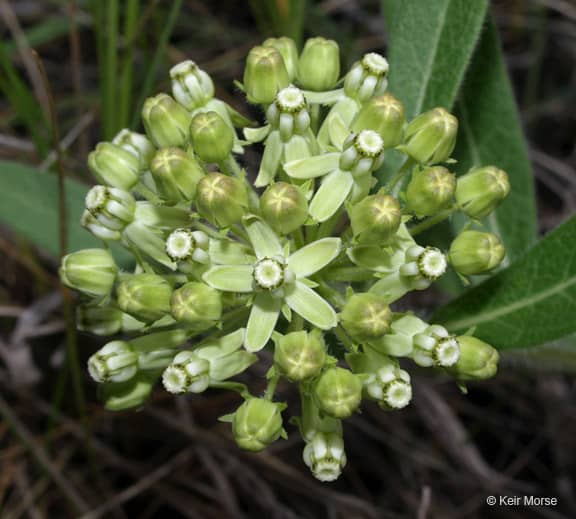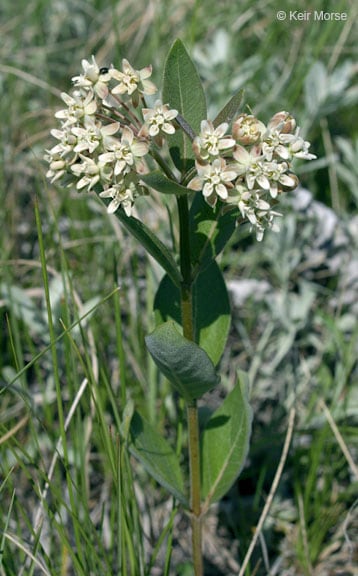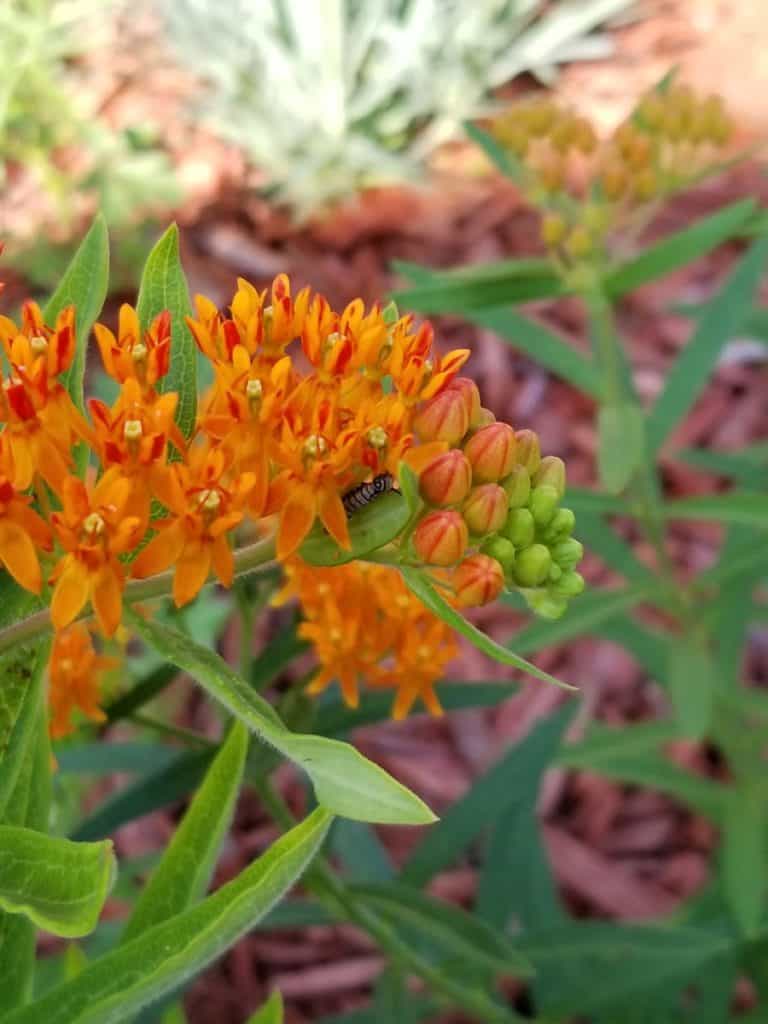Each spring the eastern North American Monarch butterflies leave their overwintering sites in Mexico and start their journey north, reaching all the way to Canada, 3,000 miles away. Throughout this long journey, the female Monarchs look for milkweed to lay their eggs on. Since milkweed is the only plant that Monarch caterpillars can eat, the availability of milkweed is necessary for the survival of this amazing butterfly.
Canada is the northernmost range of milkweed plants, and there are not many milkweed species that grow well there. Unlike in the United States where there might be dozens of milkweed varieties available for the female Monarch to lay her eggs on, in Canada there are very few milkweed species that can survive the cold winters.
Below is a list of 14 milkweed varieties that can be grown in Canada, but before we get to the list, we need to cover a few important notes.
Important Notes:
- If you are looking for milkweed plants at your local garden center, you must make sure that the plants were not treated with pesticides or insecticides, either at the store, or prior to arriving at the store. A lot of times pesticides will be used on plants to kill any insects that may eat or damage the plant. Who wants to go to their local nursery or garden store to buy pretty flowers for their garden only to find them all chewed up? How many of those plants do you think the store would sell? Not many, which is why they are treated with chemicals to kill the bugs, keep the plants in tiptop shape, and make them easier to sell. Unfortunately, if milkweed is treated with those same insecticides or pesticides, it will kill any Monarch caterpillars on the plant, which is exactly what we don’t want.
- Milkweed is toxic. The sap in the plants contain a toxin called cardiac glycoside. It’s the milkweed’s defense mechanism to keep animals from eating it. If an animal eats a milkweed plant it can be harmful or even fatal, so it is important to keep pets away from milkweed. It can also cause skin and irritation in humans. Care must be taken when incorporating milkweed into your garden. Always wear gloves when handling the plants and wash hands and skin thoroughly if you come into contact with them. By now you are probably asking that if milkweed is so toxic, how come Monarch caterpillars are able to eat it? Monarchs actually use the toxins in the milkweed sap as one of their defense mechanisms. As the caterpillars eat the milkweed leaves, the cardiac glycoside is absorbed into their tissue. The toxin is retained in the tissue through metamorphosis so it is also present in the adult Monarch butterfly. Some predators, such as birds, have been found to get sick after eating a Monarch because of this toxin, thereby teaching the bird not to eat Monarchs. The level of toxicity varies between milkweed species, and even between plants of the same species. Some plants are even too toxic for Monarchs to eat.
- Some milkweed plants are listed as Class Number One noxious weeds in certain areas and should not be planted. I will do my best to note this, but laws and classifications change from time to time, so you might want to check with your local town, municipality, or province to see which milkweeds are safe to plant, and which are not allowed.
Asclepias exaltata
- Common name: Poke Milkweed
- Native Range: Ontario (southern), Quebec (southwest)
- Hardiness Zones: ??
- Growing Conditions:
- Light: full shade, partial shade, sun
- Soil Moisture: dry
- Height at Maturity: 3′ 11″ to 4′ 11″ (1.2 m to 1.5 m)
- Notes:
Asclepias hirtella
- Common names: Prairie Milkweed, Tall Green Milkweed (Note the Prairie Milkweed is also a common name for Asclepias sullivantii, which is also native to Ontario)
- Native Range: Ontario (southern)
- Hardiness Zones: ??
- Growing Conditions:
- Light: ??
- Soil Moisture: ??
- Height at Maturity: 1′ 7″ to 3′ 3″ (50 cm to 100 cm)
- Notes: rare
Asclepias incarnata
- Common names: Pink Milkweed, Swamp Milkweed
- Native Range: Manitoba, New Brunswick, Nova Scotia, Ontario, Prince Edward Island, Quebec
- Hardiness Zone: 3
- Growing Conditions:
- Light: full sun
- Soil Moisture: moist, wet
- Height at Maturity: 1′ 11″ to 3′ 11″ (60 cm to 120 cm)
- Notes: Considered noxious in some areas.
Asclepias lanuginosa

- Common names: Side-cluster Milkweed, Woolly Milkweed (Note that Side-cluster Milkweed is also a common name for Asclepias oenotheroides that is native to Arizona, Colorado, Louisiana, New Mexico, Oklahoma, and Texas in the United States; and Woolly Milkweed is also a common name for Asclepias vestita which is native to California, USA)
- Native Range: Manitoba (southern)
- Hardiness Zone: ??
- Growing Conditions:
- Light: ??
- Soil Moisture: ??
- Height at Maturity: 0′ 9″ to 1′ 1″ (25 cm to 35 cm)
- Notes: rare
Asclepias ovalifolia

- Common names: Dwarf Milkweed, Oval-leaf Milkweed
- Native Range: Alberta, British Columbia, Manitoba, Ontario, Saskatchewan
- Hardiness Zones: ??
- Growing Conditions:
- Light: ??
- Soil Moisture: ??
- Height at Maturity: 0′ 7″ to 1′ 11″ (20 cm to 60 cm)
- Notes:
Asclepias purpurascens
- Common name: Purple Milkweed (Note that Purple Milkweed is also a common name for Asclepias cordifolia which is native to California, Nevada, and Oregon in the United States)
- Native Range: Ontario (southern)
- Hardiness Zones: ??
- Growing Conditions:
- Light: ??
- Soil Moisture: ??
- Height at Maturity: 1′ 5″ to 2′ 5″ (45 cm to 75 cm)
- Notes: rare
Asclepias quadrifolia
- Common name: Four-leaved Milkweeed
- Native Range: Ontario (southern)
- Hardiness Zones: ??
- Growing Conditions:
- Light: ??
- Soil Moisture: ??
- Height at Maturity: 0′ 11″ to 2′ 5″ (30 cm to 75 cm)
- Notes: rare
Asclepias speciosa
- Common name: Showy Milkweed
- Native Range: Manitoba, New Brunswick, Newfoundland and Labrador, Nova Scotia, Ontario, Prince Edward Island, Quebec, Saskatchewan
- Hardiness Zone: ??
- Growing Conditions:
- Light: full sun
- Soil Moisture: ??
- Height at Maturity: 1′ 5″ to 2′ 11″ (45 cm to 90 cm)
- Notes:
Asclepias sullivantii
- Common names: Prairie Milkweed, Sullivant’s Milkweed, Smooth Milkweed (Note the Prairie Milkweed is also a common name for Asclepias hirtella, which is also native to Ontario)
- Native Range: Ontario (southern)
- Hardiness Zone: ??
- Growing Conditions:
- Light: sun
- Soil Moisture: moist
- Height at Maturity: 2′ 11″ to 4′ 11″ (90 cm to 150 cm)
- Notes: Considered noxious in some areas
Asclepias syriaca
- Common names: Common Milkweed, Butterfly Flower, Silkweed, Silky Swallow-wort, Virginia Silkweed
- Native Range: Manitoba, New Brunswick, Nova Scotia, Ontario, Prince Edward Island, Quebec, Saskatchewan
- Hardiness Zone: 3
- Growing Conditions:
- Light: full sun
- Soil Moisture: dry, moist
- Height at Maturity: 1′ 11″ to 3′ 11″ (60 cm to 120 cm)
- Notes: Can spread easily. Considered noxious in some areas.
Asclepias tuberosa

- Common names: Butterfly Weed, Butterfly Milkweed, Chigger Flower, Orange Milkweed, Pleurisy Root
- Native Range: Ontario, southwest Quebec
- Hardiness Zone: 4
- Growing Conditions:
- Light: full sun
- Soil Moisture: dry, well drained
- Height at Maturity: 1′ 11″ to 2′ 11″ (60 cm to 90 cm)
- Notes: Considered noxious in some areas. If purchasing these plants please take extra care to ensure that they are nursery propagated and not collected from the wild.
Asclepias variegata
- Common names: Redring Milkweed, Variegated Milkweed, White milkweed, White-flowered Milkweed
- Native Range: Ontario (southern)
- Hardiness Zone: ??
- Growing Conditions:
- Light: ??
- Soil Moisture: ??
- Height at Maturity: 1′ 5″ to 2′ 11″ (45 cm to 90 cm)
- Notes: Considered extirpated which means that it no longer exists in this particular area. Don’t confuse this with extinction, which would mean that the plant no longer exists anywhere in the world.
Asclepias verticillata
- Common names: Eastern Whorled Milkweed, Horsetail Milkweed, Whorled Milkweed
- Native Range: Manitoba, Ontario, Saskatchewan
- Hardiness Zones: ??
- Growing Conditions:
- Light: ??
- Soil Moisture: ??
- Height at Maturity: 0′ 11″ to 2′ 11″ (30 cm to 90 cm)
- Notes:
Asclepias viridiflora
- Common names: Green Milkweed (Note that Green Milkweed is also a common name for Asclepias asperula which is native to Arizona, California, Colorado, Idaho, Kansas, Nebraska, New Mexico, Nevada, Oklahoma, Texas, and Utah in the United States)
- Native Range: Alberta, British Columbia, Manitoba, Ontario, Saskatchewan
- Hardiness Zones: ??
- Growing Conditions:
- Light: ??
- Soil Moisture: ??
- Height at Maturity: 0′ 11″ to 1′ 11″ (30 cm to 60 cm)
- Notes:











